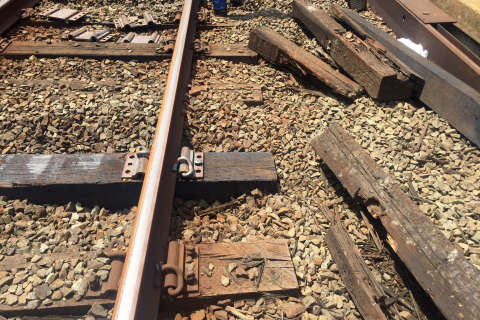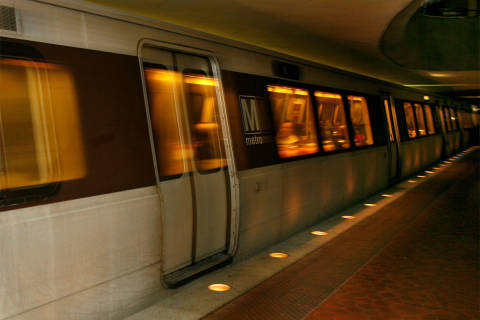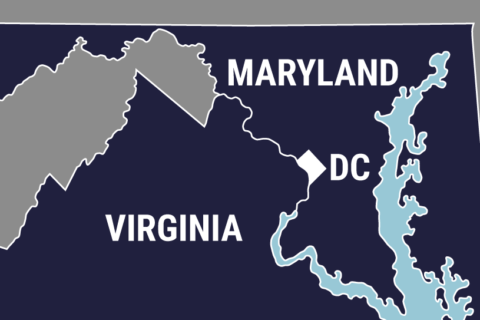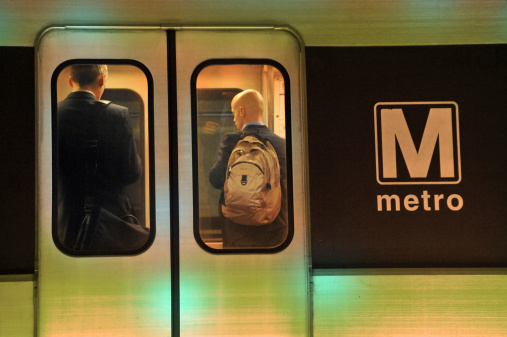WASHINGTON — Metro appears to be taking steps toward strictly following radio communication protocols that are critical to safety, but Federal Transit Administration inspectors say actual radio reception is “barely adequate.”
In recent reports, federal inspectors noted that the radio issues are, at a minimum, contributing to delays for riders.
“While it has improved, the quality of WMATA’s radio system is still poor in some locations,” an inspector wrote in the reports from November that were released publicly on Thursday.
During three inspections of Metro’s Rail Operations Control Center, which functions like air traffic control for Metrorial, the federal inspector observed “very poor radio communication” sporadically.
Metro’s three separate radio channels bled into each other during rush hour, and it took significant time to communicate with each train requesting to move.
The delays were exacerbated by speed restrictions for track problems or worker safety, which required that more radio transmissions had to be made, properly heard and repeated back.
Metro is installing a new radio system that is supposed to resolve many of these issues. A timeline released in October showed that Metro expects the new radio system to be available in some stretches of the tunnels in 2018. Other segments would come on line in 2019 or 2020.
Cellphone service cables are being installed alongside the radio system, but cell service is expected to be activated sooner.
Radio training
Federal inspectors largely noted good radio communications protocols in their November inspections, with Metro workers undergoing new refresher training on the basics and Rail Operations Control Center employees finally getting up to speed on training too.
However, a number of issues remain including inconsistent use of “over and out.”
The FTA and the head of the Rail Operations Control Center “acknowledged challenges in changing behavior and past practices.”
While failures in radio communication protocols have been identified in past incidents and close calls, some questions from workers about details went unanswered during a Nov. 1 training class, including when exactly train operators must repeat back blanket, systemwide or line-wide announcements.
A failure to understand an announcement of where a work crew was near Reagan National Airport nearly led to federal inspectors getting run over by a train in October. That train sped by the workers.
Metro staff were sometimes mocked on the radios, in what an FTA inspector called “poor radio etiquette” with “unnecessary transmissions.”
Post track surge reviews
Also in the November reports, inspectors pointed out many improvements from recent repairs that were part of Metro’s SafeTrack program, which accelerates the pace of maintenance and safety fixes by taking tracks out of service for weeks at a time. But inspectors noted a number of concerns remain.
On the Blue Line, between the Franconia-Springfield and Van Dorn Street stations, photographs show cords extending from rusted heater control fuse boxes lying on the ground after the surge work was completed. The FTA said that the fuse boxes posed a safety risk because they carry electricity through them.
On the Orange Line between the Stadium-Armory and Potomac Avenue stations, inspectors found some issues were resolved since June, but others remained outstanding including improperly installed bolts and pieces of rail still sitting in the track bed in the same spot it was during previous inspections.
On the Blue and Yellow lines near Reagan National Airport, inspectors found that the concrete pads that support each rail were still missing. In some spots, wooden forms were in place but concrete had never been poured to fix it. Inspectors noted the missing concrete was not an issue that required a speed restriction, but was something Metro should address.
In all, Metro has 76 open remedial actions from the FTA tied to recently completed track work zones, including at least two for each repair surge completed since June.
Outside of 24/7 work zones, between Capitol Heights and L’Enfant Plaza inspectors said the tunnels were dangerously dark with missing, burnt-out or soot-covered bulbs.
Unrelated to repairs completed as part of SafeTrack, inspectors said the tunnels between Capitol Heights and L’Enfant Plaza were dangerously dark due to missing, burned-out or soot-covered bulbs. Inspectors also found rail ties across the system that are too narrow.
Firefighters lack elevator key
At a Nov. 6 quarterly emergency response drill, FTA inspectors said Prince George’s County first responders did not have the key needed to override an elevator for manual operations.
The first responders also struggled to put warning devices in place that would alert riders and firefighters if the third rail power was turned back on.
The FTA said Metro should provide the elevator key and provide more training on the use of the devices.
Worker safety
The FTA has found that Metro’s worker protection guides and directives are confusing or contradictory, according to the November inspection reports.
FTA inspectors found curves or high walls that blocked the view of oncoming trains. They also noted locations were mislabeled in the worker protection guides.
Inspectors observed in November train operators speeding past workers, including at least one train operator who said she believed the speed limit was 20 mph in that situation. It is actually just 10 mph.
In another case between Fort Totten and Columbia Heights, the worker in charge of safety for a work crew did not recognize that the speed limit in that area was 65 mph rather than the 59 mph elsewhere in the system, and that contributed to an unsafe workzone with a watchman who could not have safely notified workers in time to get out of the way of a train.
FTA inspectors noted two track inspectors walking with a contractor all together Nov. 9, and no one was looking out for trains.
Metro has promised to rewrite the manuals and do a new survey of the system to identify the spots that pose the most serious risks to workers.








